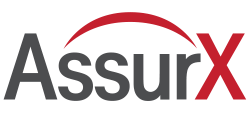January 9, 2025
FDA inspections and subsequent actions all come down to product quality. Quality system failures result in non-compliances that FDA inspectors target during their inspections. If there is any doubt that a manufacturer’s product is safe and effective, it is the agency’s responsibility to investigate issues, and the manufacturer’s responsibility to address them.
Here are five key areas where manufacturers can apply eQMS automation to directly impact areas of regulatory compliance most cited in FDA inspections, Form 483, and Warning Letters.
Document Management and Control
Failure to establish and follow written processes consistently appears in many FDA Form 483 observations and Warning Letters issued to manufacturers. This underscores the prevalence of poor documentation in manufacturing today, a problem that can lead to recalls, fines and reputational impacts.
Managing and controlling large volumes of documents, such as SOPs, training records, and quality manuals, is critical.
In many organizations, workers spend several hours each week just searching for information, which represents a huge efficiency and productivity drain.
A common problem with manual documentation practices is version control. When maintaining paper records or storing documents on server drives, individuals pass documents back and forth via email, increasing the risk of errors and making it challenging and time consuming to identify the most recent version when FDA inspectors request this information.
A modern eQMS with automated workflows in alignment with FDA regulations facilitates compliance by providing a framework for standardizing processes and maintaining proper documentation.
A manufacturer’s quality team can collaborate on documents and reviews in a controlled environment to meet FDA requirements around validation, audit trail, retention, traceability and change control.
Having a single source of truth for documentation supports efficient and effective Form 483 responses as quality teams have up-to-date, accurate and complete documents at their fingertips when issuing their responses and responding to any subsequent FDA requests for documentation.
CAPA Management
Deficiencies in CAPA management are commonly cited in FDA Form 483 observations, with lack of or inadequate CAPA procedures as one of the top findings among FDA inspectors. In many cases, insufficient CAPAs are due to outdated, siloed and manual quality systems.
When a manufacturer has manual, paper-based CAPA management process, facilitating input, approvals and changes is time-consuming, resource intensive and prone to human error. It also makes it extremely challenging for the company to track accountability along its quality chain.
Using a modern eQMS, a manufacturer can automate and standardize all the steps required to evaluate and investigate deviations and implement the appropriate actions and controls to prevent further quality incidents. All CAPA activities and information are systematically recorded to meet requirements for FDA and other regulations for validation, audit trail, electronic signatures, retention and traceability.
With all CAPAs following a defined course of action with reminders and escalations, a manufacturer has an unbreakable chain of accountability that it can leverage when responding to FDA Form 483 observations.
Change Management
Change is an inevitable and necessary element of the product lifecycle from research and development (R&D) through post-market, including adjustments to documents, requirements and processes.
Violations related to change management are commonly cited in FDA Warning Letters. A manufacturer’s ability to effectively manage change is a key FDA priority because it is fundamental to ensuring the consistency and reliability of products and processes.
Change management tools as part of an automated eQMS can help a manufacturer reduce change risks and comply with FDA regulations by providing greater visibility and control over the process:
- Initiate, track and document any change type from start to finish
- Standardize different types of change processes according to their needs, whether it’s product, process, equipment or document changes
- Ensure compliance throughout the process with centralized documentation, time-stamped audit trails, and electronic signatures
- Facilitate stakeholder collaboration and efficiency while minimizing manual handoffs, bottlenecks and delays
Furthermore, if an FDA inspector includes an observation related to change management in a Form 483, a manufacturer with automated workflows, including a secure, time-stamped audit trail, can make the history of every change available to the agency.
Complaint Management
With the lack of or inadequate complaint procedures one of the most cited observations in FDA Form 483s, complaint management should be a top priority for FDA regulated manufacturers.
Use of a paper-based complaints process requires significant manual effort and reduces the quality team’s visibility and control. For global manufacturers marketing their products in multiple countries, each with their own regulations, the complexity and scope of complaint management goes far beyond what manual processes can handle.
An eQMS with automated processes streamlines post market surveillance, helping the manufacturer ensure all complaints are processed in a timely manner and in alignment with industry regulations. This includes:
- Intake: Automation of the process and use of standardized forms help avoid errors common in manual intake of information. Intuitive workflows with clear selection criteria make triage and routing easier. Pre-configured complaint categorization helps prioritize event severity for timely response.
- Review: Prioritize complaints based on risk and objectives. Analysis of data collected will help a company determine whether a complaint or quality issue is valid and/or reportable. Verified adverse events can be electronically reported within specific deadlines to FDA, the European Union, as well as other regional regulatory bodies globally.
- Investigation: Complaints deemed valid during the review stage are categorized according to risk to prioritize investigations. Robust workflow rules move the complaint through a task and sub-task cycle to manage deviations and nonconformances.
Supplier Quality Management
As FDA regulated manufacturers increase their reliance on global suppliers, it is no surprise that lack of or inadequate foreign supplier verification program (FSVP) is one of the most common FDA Form 483 observations among food manufacturers.
Supplier issues impact drug and medical device manufacturers as well. For example, FDA 21 CFR 820 for medical device firms and ISO 9001 international standards require supplier qualification and regular evaluation as part of quality management.
In addition, The FDA Safety and Innovation Act (FDASIA) grants the FDA enhanced authority to safeguard the global supply chain for medical devices, pharmaceuticals, and biological products.
For manufacturers with siloed QMS systems and manual processes for supplier verification and quality assurance, extending quality management to external suppliers presents a significant challenge.
An eQMS with automated supplier quality management (SQM) capabilities helps manufacturers manage suppliers, vendors, contract manufacturers, and service providers with one solution designed to enforce quality and compliance goals.
A manufacturer with SQM capabilities integrated into its eQMS can efficiently centralize and manage all supplier details, securely storing everything from contact information to essential documents in one easily accessible location. It can demonstrate a strong compliance posture during FDA inspections and create a documented record of compliance for use in response to Form 483 observations.
Conclusion
Quality management professionals in highly regulated industries – drugs, devices, food – bear a tremendous burden in ensuring compliance throughout their companies’ product lifecycles – from raw material and components to post-market surveillance.
As the FDA has placed a growing emphasis on quality operations, beyond compliance alone, manufacturers have invested in their quality systems and teams – transitioning from departmental silos, disjointed systems and manual processes to modern, enterprise quality management systems (eQMS) that integrate core quality processes and automate workflows in alignment with FDA regulations.
The ultimate goal of eQMS with their digital transformation of quality processes is to enable a manufacturer to instill quality practices throughout all of its operations and therefore avoid non-compliance in the first place.
Download a free case study to learn how one global pharma manufacturer eliminated paper-based processes
About the Author
Stephanie Ojeda is Director of Product Management for the Life Sciences industry at AssurX. Stephanie brings more than 15 years of leading quality assurance functions in a variety of industries, including pharmaceutical, biotech, medical device, food & beverage, and manufacturing.


